Norwegian Food: Basic Overview
Common Ingredients
Common Cooking Methods
Courses
Meals
Key Taste
Eating Etiquette
Meal Presentation
Culinary Festivals
Influence and Fusion
Popular Types of Norwegian Food
-
Stews
Stews in Norway are warming dishes, ideal for cold seasons.
Traditional stews usually contain potatoes.
These stews’ components are slow-cooked, resulting in tender meat and flavorful broth.
-
Cakes and Pastries
Norwegian cakes and pastries’ flavors range from sweet to savory.
These baked goods often use local ingredients like berries, nuts, and dairy.
-
Fermented or Pickled Dishes
Fermentation and pickling are ancient preservation methods that have shaped Norwegian cuisine.
“Rakfisk,” a famous fermented fish dish, is a delicacy with a strong flavor.
They’re commonly served during Christmas and Easter.
Norwegian dishes are the various specialties enjoyed in Norway, a country in Northern Europe and part of Scandinavia. These dishes are strongly influenced by local cuisines, especially by Swedish specialties and food offerings from Denmark.
Seafood, meat, dairy products, and whole grains are the building blocks of Norwegian cuisine, which is full of simple yet hearty and nourishing dishes. Preserved food is very popular in winter, while summer brings various fruits and vegetables to the diet.
To help you understand traditional Norwegian food, I will present the most important facts about its characteristics, global popularity, and healthy aspects.
Next, I will describe the most popular 23 Norwegian dishes in depth before covering the main traits of Norwegian cuisine and suggesting food and drink pairings.
23 Most Popular Norwegian Dishes with Filters
Get ready to uncover the 23 most famous dishes in Norway. My advanced filters, like alphabetical sorting, main ingredients, taste, cooking methods, dish types, courses, and global popularity, will help you explore this content more easily.
In addition, use other filters concerning specific culinary styles, such as the various labels of traditional, national, street food, fusion, exotic, and vegetarian dishes.
Fårikål
- National
- Traditional
Fårikål is a simple Norwegian stew made with mutton, cabbage, and black peppercorns. Locals love to enjoy this dish with boiled potatoes during cold days.
Fårikål originates from the western parts of Norway and is associated with the annual Fårikål Feast Day, which is celebrated every last Thursday in September. Originally a fall dish, this simple stew is now available year-round.
Lefse
- Street Food
- Traditional
Lefse is a traditional Norwegian flatbread made from potatoes, flour, butter, and milk or cream. With a soft, flexible texture, it is often rolled up with sweet or savory fillings such as butter and sugar, cinnamon, or even lutefisk (dried, lye-cured fish).
In the past, Norwegian families prepared a lot of lefse, then dehydrated and stored them before winter.
The making of lefse involves rolling the dough very thinly and cooking it on a hot griddle. Lefse varies from region to region in Norway, with both thin and thick, pancake-like varieties.
A well-known lefse variant is lompe, which is smaller and made with only potatoes, flour, and salt. Norwegians often roll it around a hot dog sausage, a popular food combo for Norway’s Constitution Day on May 17th.
Vafler
- Street Food
- Traditional
Vafler is the Norwegian version of waffle, which is heart-shaped, softer, and thicker than its Belgian counterpart. Its main ingredients are flour, baking powder, sugar, milk, butter, eggs, and cardamom, which are prepared in a specially shaped waffle iron.
Most people in Norway serve vafler with sweet accompaniments, such as sour cream, raspberry or strawberry jam, and brunost (a sweet, caramelized cheese). In Moss, a municipality in Norway, locals like to eat vafler with sausages in place of a hot dog bun.
Pinnekjøtt
- Traditional
Pinnekjøtt, literally “stick flesh,” is a common lamb dish for Christmas in Norway, especially the northern and western regions.
Pinnekjøtt consists of dried and salted lamb ribs that are rehydrated and steamed over birch branches. Such cooking practice might be the reason for its curious name.
The most typical accompaniments for pinnekjøtt are mashed rutabaga, boiled potatoes, beer, and aquavit (a Scandinavian spirit).
Kjøttkaker
- Traditional
Kjøttkaker, literally “meat cake,” is a type of Norwegian meatball with a rather large size. It is made from ground beef, onions, ginger, and nutmeg, which are mixed together and formed into patties
Norwegians traditionally pan-fry these meatballs before simmering them in a chocolate-colored gravy of flour, beef stock, and butter. The resulting dish pairs well with boiled potatoes, mushy peas, lingonberry jam, and pickles.
Gravlax
- Traditional
Gravlax, also known as graved salmon, is a Norwegian dish made from salmon that is cured using salt, sugar, and dill. Besides Norway, it is well known in many other Nordic countries.
Graved salmon dates back to the Middle Ages, when fishers preserved fish by burying it in the sand above the high-tide line for a few days to salt and ferment the fish naturally.
Nowadays, people prepare gravlax by brining salmon in more conventional ways. This cured fish dish is often sliced into thin slices and served with hovmästarsås (a dill and mustard sauce), bread, or boiled potatoes as an appetizer.
Gravlax is a Norwegian staple during the Christmas, Easter, and Midsummer celebrations.
Lutefisk
- Exotic
- Traditional
Lutefisk is a traditional Norwegian dish made with whitefish, usually cod, ling, and burbot. People air-dry or salt and dry the fish, soak them in a lye solution to give them a gelatinous texture, then rinse and cook the cured fish.
An acquired taste for outsiders, lutefisk is a hate-it-or-like-it dish often served with bacon, pea stew, boiled potatoes, and mustard. Eating lutefisk is an essential part of Swedish Christmas cuisine.
Rømmegrøt
- Traditional
Rømmegrøt, literally “sour cream porridge,” is a rich and creamy Norwegian porridge made from sour cream, whole milk, wheat flour, and salt. It is best enjoyed with butter, sugar, cinnamon, bread, or even cured pork.
Since rømmegrøt is so rich, it usually comes in small cups. Locals enjoy it at many celebratory meals, including Norwegian Constitution Day, Christmas, and other holidays.
There is an annual rømmegrøt eating contest held in Westby, Wisconsin, by Norwegian-Americans to celebrate their heritage.
Lapskaus
- Traditional
Lapskaus, also known as lobscouse, is a rich and hearty Norwegian stew originating from the need for hearty and sustaining meals during the colder months. It typically consists of diced potatoes, carrots, and beef or pork.
Lapskaus comes in two varieties: light and dark, with the dark version featuring a brown sauce base and a more flavorful taste. Both versions of lapskaus go well with flatbread or rye bread and pickled beetroots.
Fiskesuppe
- Traditional
Fiskesuppe is a famous Norwegian fish soup with a thick and creamy texture. Locals prepare it by simmering a variety of seafood, such as cod, salmon, pollock, mussels, and shrimp, with potatoes, carrots, and leeks in a broth enriched with cream.
Fiskesuppe hails from the coastal areas of Norway, yet it holds an important place in the heart of all Norwegians. People often eat this fish soup with lemon juice, herbs, and crusty bread, which is ideal for dipping into the flavorful broth.
Sodd
- Traditional
Sodd is a famous Norwegian soup dating back to at least the 13th century. Closely linked with the Trøndelag area, it is strongly associated with festive events, such as weddings.
Sodd consists of diced mutton or beef, meatballs, carrots, and potatoes, all cooked in a clear, aromatic broth. The meatballs use very finely ground pork, beef, or lamb to create a particularly smooth texture.
Traditionally, sodd is served with boiled potatoes and flatbread on the side, delivering a light but satisfying taste.
Klippfisk
- Traditional
Klippfisk, literally “cliff-fish,” is a Norwegian dish of dried and salted cod created in the 18th century. Hailing from the coastal regions, it is historically dried on the cliffs (klipp) by the sea, a method that preserves the fish and imparts a unique, concentrated flavor.
Today, people dry klippfisk indoors using electric heaters. To use in cooking, the dried and salted cod needs to be soaked in water for desalination before being added to stews and other savory dishes.
Rakfisk
- Exotic
- Traditional
Rakfisk, literally “wet/ drenched fish,” is a Norwegian delicacy made from fermented freshwater fish, such as trout or char. It was first recorded in the mid-14th century, though its history is certainly more ancient.
The fermentation of rakfisk typically lasts for months, creating a strong, pungent flavor and a soft, almost spreadable texture. Rakfisk is best thinly sliced and served on flatbread or lefse with sour cream, red onions, and sometimes mustard.
Norwegians usually enjoy rakfisk during Christmas and winter months, but this fermented fish dish also makes an appearance at the Rakfisk Festival in November each year.
Smalahove
- Exotic
- Traditional
Smalahove, literally “sheep head,” is a traditional Norwegian Christmas dish made with sheep head. The head is salted, dried, and boiled or steamed until tender.
A typical serving of smalahove is often minus the brain, which can be eaten separately with a spoon. Locals often eat smalahove with mashed rutabaga and potatoes.
In many Norwegian villages, people serve the sheep head on the last Sunday before Christmas and save the other parts of the sheep for Christmas dinner. While it may be an acquired taste, smalahove vividly demonstrates the local ethos of utilizing every part of the animal.
Fiskeboller
- Traditional
Fiskeboller, translating to “fish ball,” is a popular Norwegian dish made from finely ground white fish (such as cod or haddock), milk, flour, and eggs. These bouncy balls are poached in a broth or water.
Norwegian fish balls usually go with a side of carrots, potatoes, broccoli, and a béchamel sauce or tomato sauce since they are quite bland on their own.
Modern fiskeboller is widely available in cans or boxes with ready-made fish broth. The Norwegian fiskeboller firm called Vesteraalens has produced over a million cans.
Raspeball
- Traditional
Raspeball, also known as potetball, komle, or klubb, is a well-known Norwegian dumpling. People prepare it from grated potatoes and flour with salted meat or bacon for added flavor.
These hearty potato dumplings pair beautifully with a side of melted butter, crispy bacon bits, mashed rutabaga, and sometimes a dollop of sour cream. Raspeball appears in many Norwegian restaurants, especially those in the Western region.
Sursild
- Traditional
Sursild is a classic Norwegian pickled herring dish. It involves curing herring filets in a mixture of water, vinegar, sugar, raw onions, and various spices like peppercorns, bay leaves, and mustard seeds.
In recent years, the marinade of sursild has featured more non-traditional ingredients, such as sherry, dill, and mustard.
A food combo of sursild and rye bread, boiled potatoes, sour cream, or mayonnaise-based sauces is an essential part of traditional Norwegian Christmas, Easter, and Midsummer celebrations.
Krumkake
- Traditional
Krumkake is a famous Norwegian waffle cookie known for its intricate patterns and cone shape. These characteristics come from molding the cookie batter in a special decorative two-sided iron griddle and rolling it into a conical form while it is still hot and pliable.
Krumkake is a crisp, buttery snack that is often filled with whipped cream or other sweet ingredients. This waffle cookie is particularly popular during Christmas and other festive occasions.
Pepperkaker
- Traditional
Pepperkaker is a thin, crispy Norwegian gingerbread cookie spiced with ginger, cloves, cinnamon, and black pepper. It is a staple of Christmas traditions, often used for decorating and making gingerbread houses.
German immigrants Pepperkaker and gingerbread houses were introduced to Norway many centuries ago. This gingerbread cookie comes in many different shapes, such as hearts, stars, and traditional Norwegian motifs.
The Norwegian city of Bergen is home to the world’s largest gingerbread town.
Serinakaker
- Traditional
Serinakaker is a beloved Norwegian butter cookie with a sweet, rich taste and a delicate texture. Its main ingredients are butter, sugar, flour, sliced almonds or pearl sugar, and vanilla or cardamom.
The first recorded recipe of serinakaker dates back to the mid-19th century, and this butter cookie has been a Norwegian favorite ever since. Its name literally means “Serena cookie,” with Serena speculated to be the treat’s creator.
Finnbiff
- Traditional
Finnbiff is a fascinating Norwegian stew made with reindeer meat from the northern region. Often associated with Sami culture, it is made by sautéing thinly sliced reindeer meat, then cooking it in a rich sauce made of juniper berries, sour cream, and beer or stock.
Locals traditionally fry reindeer meat in reindeer fat, but most people prefer butter and oil nowadays. The best accompaniments for this savory and gamey stew are mashed potatoes, lingonberry jam, or fresh lingonberries mixed with sugar.
Skillingsboller
- Traditional
Skillingsboller is a common cinnamon bun in Norway. This beloved pastry snack is made from a yeast-leavened dough filled with a mixture of cinnamon, sugar, and chopped nuts.
After being rolled up and sliced into individual buns, skillingsboller is baked until golden and often topped with extra butter or cinnamon sugar.
Norwegians often enjoy skillingsboller as an afternoon snack with a cup of coffee or brunost cheese. This snack is often associated with the city of Bergen.
Tilslørte Bondepiker
- Traditional
Tilslørte bondepiker, literally “veiled peasant girl,” is a Norwegian layered dessert made with apple puree, sugar-toasted breadcrumbs or crushed sweet rusks, and whipped cream.
The appeal of tilslørte bondepiker lies in its wonderful contrast between the tartness of the apples, the creamy sweetness of the whipped cream, and the crunchy texture of the breadcrumbs.
Legend has it that a peasant girl handed tilslørte bondepiker to Ivar Aasen, a 19th-century Norwegian poet, and made him fall in love with her. Although this romance eventually went nowhere, the dessert and its poetic name remain to this date.
After the tour of the 23 most well-known dishes in Norway, how about taking a close look at the general features of local cuisine?
What Is Special About Norwegian Cuisine?
The uniqueness of dishes in Norway comes from the five factors below.
Due to historical and cultural ties, Norwegian cuisine shares many similarities with the cooking traditions of many countries in Scandinavia, especially Denmark and Sweden.
Norway’s long coastline and maritime culture have made seafood, including fish like salmon, herring, and cod, a staple in its diet.
The vast forests and mountains provide a variety of game, such as moose, deer, and reindeer. The rugged terrain, limited arable land, and cold climate only allow the cultivation of certain hardy crops, such as barley, oats, potatoes, and rutabaga.
Owing to the long and harsh winter, various preservation methods are used, such as drying, salting, and smoking.
Norwegian cuisine tends to emphasize the natural flavors of the ingredients rather than the heavy use of spices. Dishes are often rich, hearty, and available in large portions.
Norwegian dishes vary significantly from the coast to the inland areas, as well as with the seasons.
Inland and northern parts of Norway have a tradition of hunting and herding, making meaty dishes more popular, while coastal regions emphasize seafood.
The long summer days allow for a variety of fruits and vegetables to grow and be used in various dishes, while winter calls for preserved meat, fish, and pickles.
Norwegians have many special dishes for traditional events and holidays, such as Christmas and the Midsummer celebrations.
What Beverages to Pair With Norwegian Dishes?
Norwegian dishes are suitable accompaniments for the following local beverages.
Spirits
Norwegians enjoy a wide range of spirits, such as aquavit and vodka. These beverages are excellent for pairing with savory dishes of various kinds, such as fårikål, lutefisk, rakfisk, and smalahove.
A cup of aquavit or vodka can help you better appreciate dishes with an acquired taste!
Cider
The sweetness and acidity of Norwegian cider can complement rich, creamy, or savory flavors, including dishes like rømmegrøt, fiskeboller, or lapskaus.
Beer
Beer goes well with snacks or salty dishes, especially klippfisk, lefse, and kjøttkaker.
Coffee
Like in other countries, Norwegian cuisine offers various pastries and desserts suitable for enjoying alongside coffee, namely krumkake, serinakaker, pepperkaker, and tilslørte bondepiker.
Do you have any favorite dishes in this Northern European country? Tell me about your experience in the comment section. Remember to share this list of Norwegian dishes with your friends and fellow food lovers.

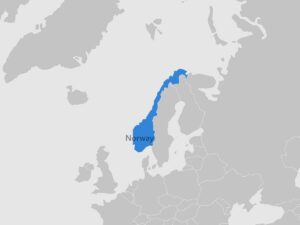
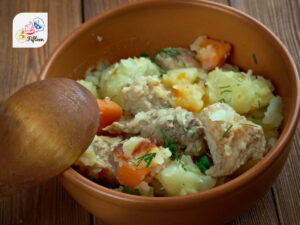
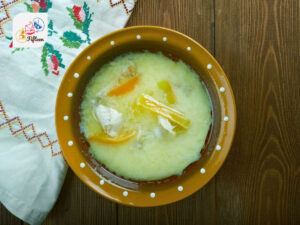
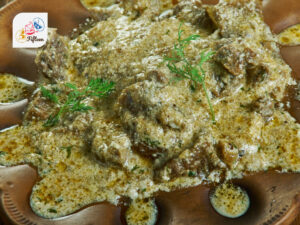
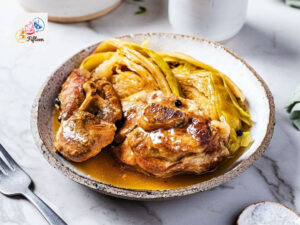
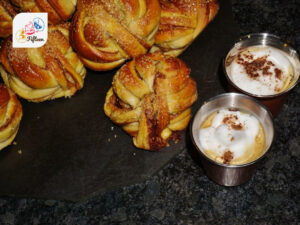

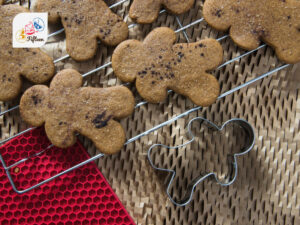
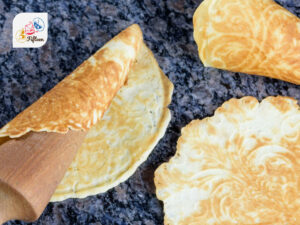
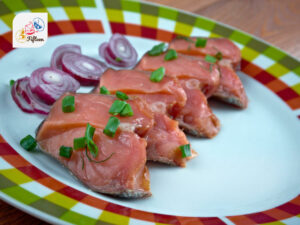
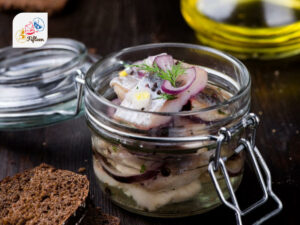
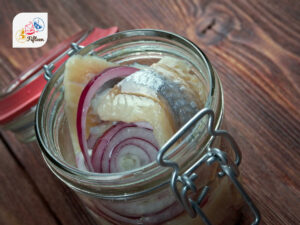
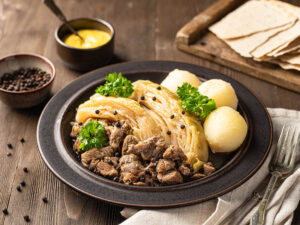
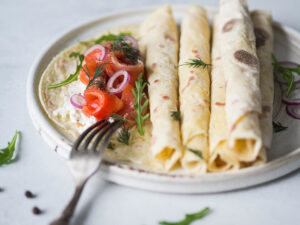

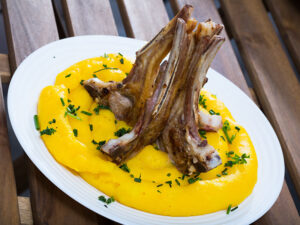
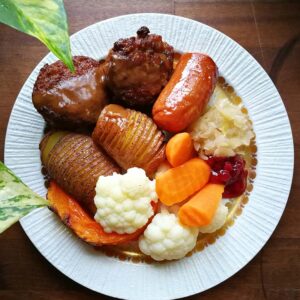
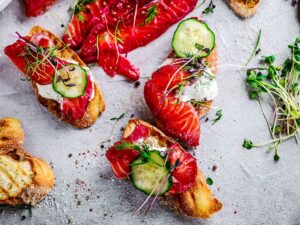
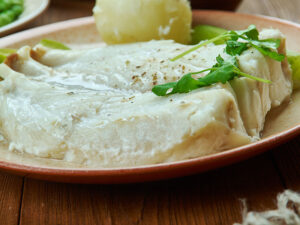
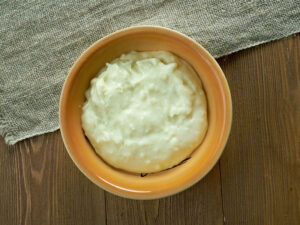
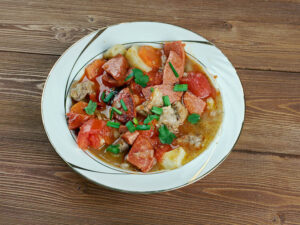
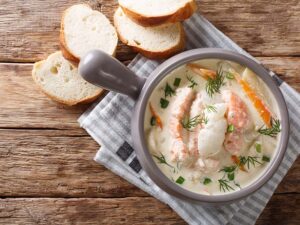
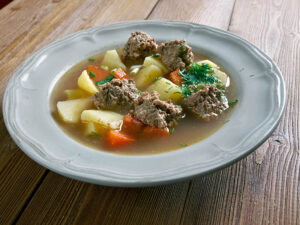
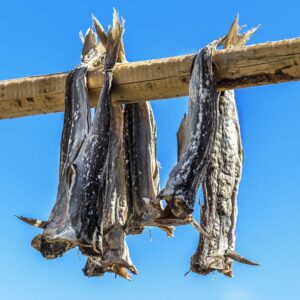
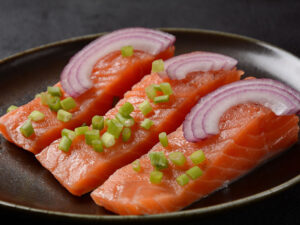
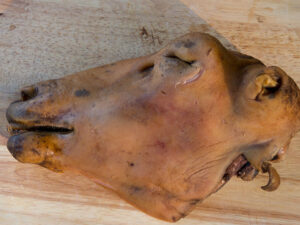
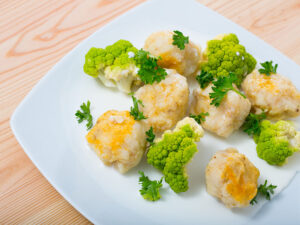
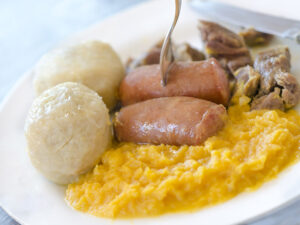
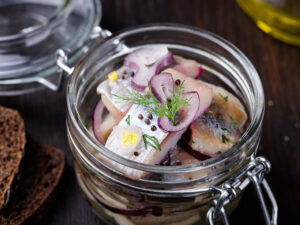
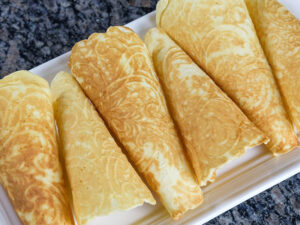
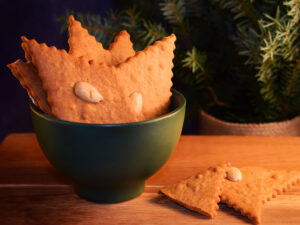
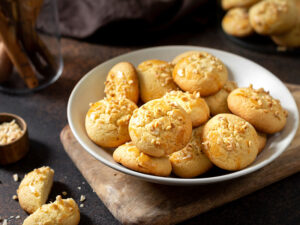
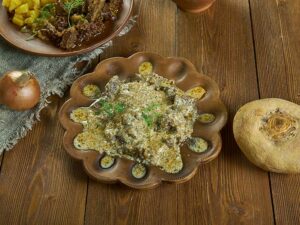

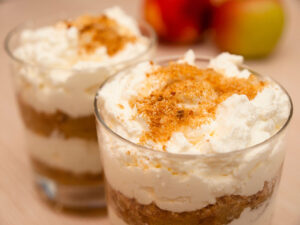
Jamie Scott
Editor in Chief, Senior Content Writer
Expertise
Home Cooking, Meal Planning, Recipe Development, Baking and Pastry, Food Editor, Cooking-video Maker, Western Food Evaluation Expert
Education
Le Cordon Bleu College of Culinary Arts
Local Community College, New York, NY
Jamie Scott is a skilled culinary expert and content creator specializing in Western cuisine. With over 15 years in the culinary field and formal training from Le Cordon Bleu, Paris, Jamie deeply understands how to blend nutrition with delicious flavors. His passion for cooking matches his commitment to making healthy eating accessible and enjoyable.
On Fifteen.net, Jamie brings a fresh perspective to classic dishes and beverages, offering readers insightful recipes, cooking tips, and a fresh view on meal planning that emphasizes taste, health, and simplicity.